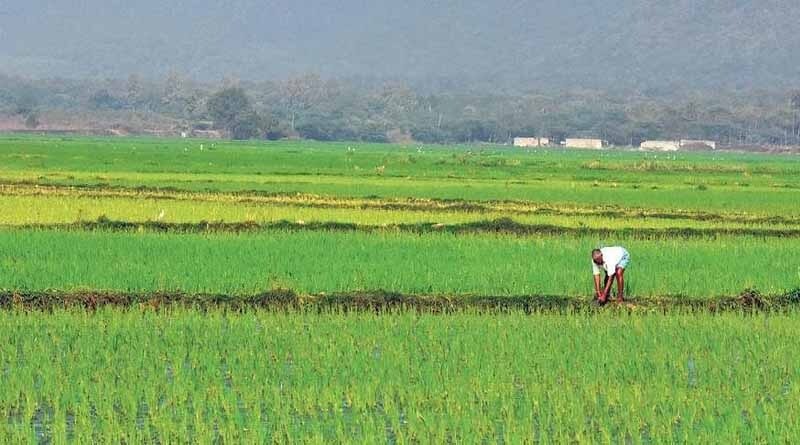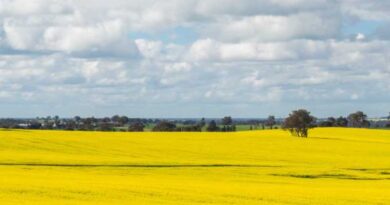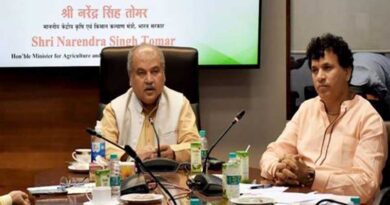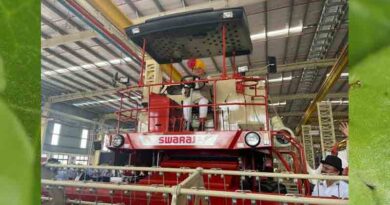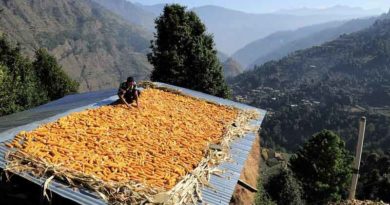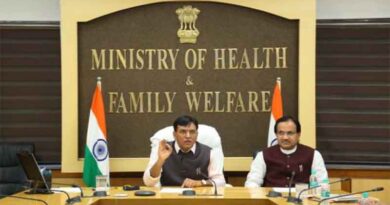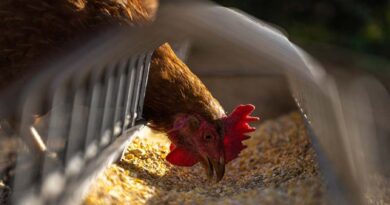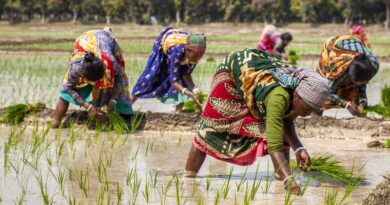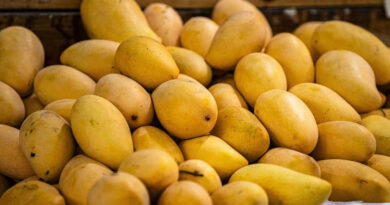Are our farmers aware of the magnitude of climate change?
Guest Author: Shashikant Trivedi, Senior Journalist
05 October 2021, New Delhi, IN: Among other major challenges during the early decades after independence was to increase crop production and yield at any cost in Indian agriculture.
Today, the challenge is bigger. When Prime Minister Narendra Modi took over from the previous Congress government in 2014, the prime focus was to double the income of farm community by 2022. Not, it is not only about increasing farm income but also ensuring quality production in a fast climate changing scenario.
The challenge has become bigger and larger since the farm production needs to be increased further with low input cost and with judicious use of resources in view of anticipated and imminent crises that may come up due to climate change.
Nowadays, entire globe is organising mega events for discussing climate change and trying to reach a conclusion about the measures that can be taken to deal with any calamity on agriculture.
In India, Prime Minister Mr. Narendra Modi has released 35 special varieties of crops to Indian farmers for cultivation. Indian scientists have claimed that all these varieties of different crops can tolerate climate fluctuations and have high nutrient content. More interestingly, these crops varieties have been developed in 2021. These include drought resistant varieties of gram, mosaic virus resistant tur, early maturing disease resistant varieties of soybean, weed-resistant rice and bio-fortified varieties of wheat, millet, corn chickpeas, quinoa and fava beans. For example, one is weed resistant rice variety developed by the Indian Agricultural Research Institute (IARI). Scientists have claimed that there is no need to prepare and plant it; the variety can be sown directly in fields. Farmers plant and grow paddy mainly in flooded fields to control weeds, but this variety is naturally weed resistant.
Also Read: Organic Food Advocates Seek Reversal of Decision Authorizing Labeling of Hydroponic Operations
This variety has been developed by the scientists of our country by improving genes of paddy. It is not affected by weeds nor weedicides.
This variety of paddy can be cultivated without any nursery preparation, transplanting it in puddles and flooded fields. Farmers will save about 30 per cent water, labour cost of Rs 3,000 per acre and 10-15 days of direct sowing time as compared to the time consumed in conventional transplanting method.
Today, not only farmers but our scientists are also worried about fast climate change. The concern is not only about making agriculture a profitable business, but also whether we understand the importance of investing in public agricultural research for any eventuality.
The challenge before India after independence was to feed its population and achieve self-sufficiency in food grains, which during the 1960s and 1970s was not possible without good yielding crop varieties. But today we do not know anything about the disasters caused by climate change. Average temperatures are rising, winters are getting shorter and the number of rainy days is falling even with an overall “normal” monsoon. In such odds, farming and allied activities like raising livestock has increasingly become difficult if our farms face extreme hot and cold or prolonged dry weather and heavy rains. Add to it, fast depleting water levels, rising energy costs and invasion of new species of pests and diseases are making it very difficult to farmers.
Agriculture and climate change are so important that it should not be left only to bureaucrats, economists and activists. Research in agriculture; like subsidies and welfare schemes, cannot yield political dividends or pay off debt in the short term. But the returns from agricultural research are evident from the fact that Indian Institute of Agricultural Research (IARI) varieties alone account for more than 95 per cent of India’s Rs 32,000 crore annual basmati rice exports and nearly half of its total wheat area.
Now questions is how is climate change related to agriculture? In fact, methane and nitrous oxide gas are formed in almost all agriculture activities. The methane gas is a greenhouse gas produced by intestinal digestive processes typical of all ruminants, while nitrous oxide production is associated with the management of organic manure and chemical fertilizers. Cattle or livestock accounts for about 50% of the total greenhouse gas produced by the industry. Experts believe that farmers’ first response to the threat of climate change should be to improve the efficiency of their business. What is needed today is that India, which is largely an agrarian economy, should switch over to non-methane producing substances in animal rations, develops new fertilizers and takes initiatives to improve the rate of carbon sequestration in the soil.
World leaders, religious leaders, scientists and thinkers have expressed deep concern about the dangers of climate change. A mega conference on climate change namely COP 26 is to be held in Glasgow in October. To which , Pope Francis warned, “The COP26 in Glasgow will provide an effective response to the unprecedented climate change crisis facing us and the crisis of those values, we are experiencing now, and thus give some concrete hope to future generations.”
Dr Elizabeth Magowan, Director of Agri Food and Bioscience, the premier institute for agriculture, climate and rural affairs in Northern Ireland in the UK, says that overall greenhouse gas emissions levels in Northern Ireland have dropped significantly as various methods had been adopted in waste management to reach the goal. But the end result is that agriculture is now the largest producer of greenhouse gas emissions within the local economy. She says, if agriculture is looked at in different parts, beef has caused the most damage because it is at the top of the list of greenhouse gas-generating inputs.
Magowan further says the use of smart technologies and the use of precision livestock farming systems will also emerge in the years to come. The world needs low methane-producing animal varieties.
She may be right, but the question is whether the Indian farmers who are contesting agriculture laws or those farmers who have not contested these laws have such information about greenhouse gases, so that they can know what to do and what not to do? Do they know, environmental scientists and agricultural research organizations worrying and discussing about some terrible trouble is about to come? Do farmers know that they can identify through carbon audits where greenhouse gas-producing sources exist in their farming business? And how to adopt those methods?

